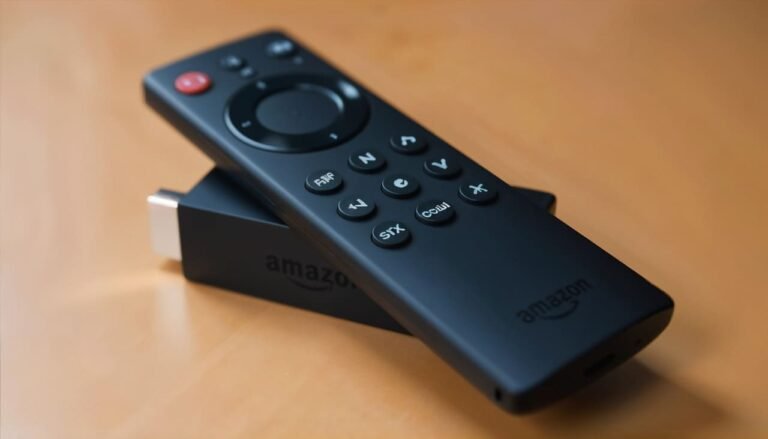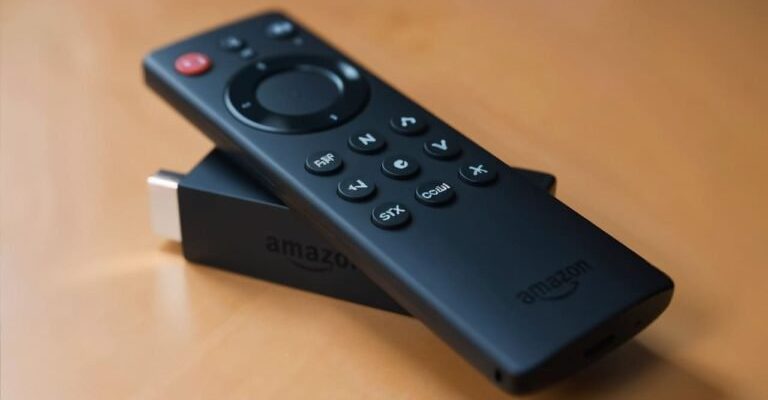
Here’s the thing: programming or syncing your remote isn’t supposed to be rocket science. But, let’s be real, it often feels like it is. Whether you’re poking at tiny reset buttons, swapping out batteries like you’re in a pit crew, or muttering “why won’t you pair?” under your breath—mistakes happen. And they’re almost always the same ones. If you’re scratching your head over codes, sync fails, and mysterious battery drains, you’re definitely not alone. Let’s shine a light on these common remote-control headaches, and talk through why they happen and, more importantly, how to fix them.
Confusing Pairing Steps: Where Most People Trip Up
Pairing an Amazon Fire remote should feel like a quick handshake between friends, but sometimes it turns into an awkward missed high-five. A lot of folks start off by pressing the wrong buttons, or holding them down for either too long or not long enough. And honestly, the official instructions can be a bit cryptic, especially with different generations of the remote floating around. Did you know that holding “Home” for 10 seconds is pretty standard, but on some remotes it’s more like 20? That tiny detail can make a world of difference.
The remote itself never exactly tells you “I’m pairing now!”—unless you count that little blinking LED (which is super easy to miss if you’re not looking for it). Maybe you’re like me, and you start wondering if you’re already in some weird sync mode or just holding a dead battery. Take it slow: double check you’re on the right screen on your Fire device, point the remote straight at the TV, and give yourself some breathing room for those seconds to tick by.
I’ve watched people tear through the process five times before realizing there was already another remote nearby that was confusing the setup. And yes, walls, furniture, and even pets can block the signal! If pairing feels like it’s stubbornly refusing to work, clear everything around, un-pair any old devices, and try again—one step at a time.
Ignoring Battery Problems: The Sneakiest Culprit
This one gets almost everyone sooner or later. Batteries are like the quiet roommate who never causes problems—until one day your fridge light won’t turn on. Fire remotes are notorious for eating through batteries quicker than you’d expect, especially if you’re using off-brand ones or grabbing whatever’s in the junk drawer.
Here’s a secret: cheap batteries can cause weird hiccups. Not just dead remotes, but sometimes random disconnects, laggy responses, or even making the device refuse to program properly. If your Fire remote starts acting up, swap in fresh, reliable batteries before you do anything drastic with reset buttons or code sequences. Leave rechargeables out of the equation if you can; they don’t always play nicely with these gadgets.
It’s also possible to put the batteries in the wrong way. I know, sounds silly—but when you’re desperate to get back to binge-watching, mistakes happen! Double-check the polarity (+ and – signs) inside the compartment. If you ever open your remote and find battery gunk, clean it carefully (cotton swab, little vinegar or rubbing alcohol), dry it fully, and try again. Good batteries are like good coffee—don’t skimp.
Programming Codes: Mixing Up the Sequence
Let’s talk programming codes. Some Fire remotes, especially if you’re using universal models or third-party brands, require you to enter a specific code. This process can feel like trying to crack a safe if you’re not used to it. The biggest mistake? Skipping a step or mixing up which button to hold when. Universal remotes can mimic the original, but they’re not mind readers.
Suppose you’re handed a code list the size of a CVS receipt. One wrong digit, and suddenly your remote is controlling your neighbor’s soundbar instead of your TV. Always double-check the brand and the code list—most companies post updates online if the printed list is outdated. If your Amazon Fire device came with a remote, stick to the original settings. Only try code programming if you really need an alternative or replacement remote.
A little tip: write down anything you try, especially if you’re bouncing between codes. There’s nothing more annoying than finding the one that *almost* works and not remembering which digits you used. Don’t be afraid to start over if you get lost. Sometimes it’s faster to wipe the slate clean and retrace your steps from the beginning.
Forgetting to Reset or Power Cycle
You know how sometimes your computer or phone just needs a restart to fix weird glitches? Your Fire TV remote can be the same way. But “reset” means different things depending on the device. Some people think taking out the batteries for two seconds is enough. Others think smashing every button at once will help. The truth sits somewhere in the middle.
When a remote gets stuck, unresponsive, or refuses to sync, resetting can work wonders. Take out the batteries, unplug your Amazon Fire device, and wait at least a full minute. Not ten seconds—really let it sit. Then put everything back, and start the programming or pairing process fresh. This clears any weird temporary bugs that can clog up wireless communication.
There’s also a hidden “factory reset” button on the remote itself, depending on the model. It’s usually a tiny pinhole you can poke with a paperclip. Hold it down for 10–15 seconds until the LED blinks. This wipes things back to factory settings, which is a lifesaver if you’re totally stuck. Just remember, doing this means you have to pair again from scratch. It’s like starting a video game over—sometimes it’s the only way.
Mismatched Devices and Software Updates
This one can sneak up on you. Fire remotes are designed to work with specific models and versions of the Fire streaming device. Grabbed a remote off eBay? Borrowed from a friend? Sometimes the hardware just doesn’t match up, even if everything looks exactly the same on the outside. A lot of folks assume any Fire TV remote will work with any Fire device, but that’s not always true.
What’s more, software updates can cause compatibility problems. Maybe your Fire Stick updated itself automatically, but your replacement remote is using old firmware. Suddenly, programming it is like trying to teach an old dog new tricks. Always check the fine print—either on Amazon’s official site or the packaging. Make sure your remote is made for your exact model (Fire TV Stick Lite, 4K, Cube, etc.)
If you’re unsure, look up the serial number or model info in your device settings menu. And be ready for a round of updates if you pair a replacement remote; sometimes, it’ll trigger a fresh download and install, which can take a few minutes. Patience is key here. Grab a snack and let the tech catch up.
Signal Interference: When Invisible Forces Mess With You
Here’s something you probably won’t think about until it’s an issue: signal interference. Amazon Fire remotes connect using Bluetooth or infrared, depending on the model. Both are super convenient—until something gets in the way. Maybe your Wi-Fi router is too close, or there are a ton of other wireless devices beaming signals through your living room.
Honestly, just having a stack of magazines or a solid coffee table between you and the TV can mess things up. Try holding the remote closer, or moving other electronics away from the streaming device. If you have a universal remote, double-check that it’s aimed directly at the receiver.
One sneaky culprit is low batteries—yep, those again. Weak battery power can actually reduce the remote’s ability to cut through minor interference. So if everything *almost* works, but not quite, swap in fresh batteries and see if things improve before blaming your entire setup.
Mixing Up Remotes: Juggling Multiple Devices
Have you ever picked up what you thought was your Fire remote, mashed a bunch of buttons, only to realize you were holding the one for the soundbar or TV? You’re not alone. Many living rooms are remote jungles: TV, sound system, Roku, Fire Stick, you name it. It’s easy to grab the wrong one by mistake.
Programming errors happen when you try to sync or pair the wrong remote to the wrong device. Even universal remotes sometimes need to be set to the right “mode” before they’ll talk to your Fire TV. Label your remotes with stickers, or use colored silicone covers—trust me, it helps cut down on the mix-ups.
And here’s a tip: if you have visitors or family members who aren’t as tech-savvy, show them which remote does what. I’ve seen folks accidentally reset everything just by exploring buttons out of curiosity. Get everyone on the same page, and you’ll avoid a lot of “it stopped working!” drama when you’re not around.
Relying on Universal Remotes: The Good, the Bad, and the Headaches
Universal remotes are like Swiss Army knives—super handy in theory, but sometimes tricky in practice. Most people reach for these when the original Amazon Fire remote disappears (probably between the couch cushions forever). But universals need proper programming. This means hunting for the right code, syncing to the correct device, and sometimes updating firmware.
Honestly, if you just want something that “works out of the box,” original Fire remotes are less hassle long-term. Universal options are great for consolidating everything, but programming them takes patience. Some universals don’t support all Fire TV features—like microphone voice search or volume control—out of the box. Double-check the compatibility chart, and be prepared for a few trial-and-error moments.
If you go with a universal remote, write down exactly which codes and steps worked. That way, if you ever reset or replace it, you won’t be starting from square one. And remember: the more buttons, the more places for mistakes to hide.
Programming an Amazon Fire remote isn’t always intuitive, but making a few simple tweaks—fresh batteries, patient pairing, checking compatibility—solves most problems. Don’t panic or overthink it; you’ve got this.
When it comes down to it, most programming mistakes with Amazon Fire streaming device remotes are about small details. Maybe it’s the wrong button sequence, a sneaky old battery, mixed-up codes, or just plain confusion between different gadgets. By taking things slow, following each step carefully, and not being afraid to start over, you’ll save yourself a ton of unnecessary headaches. And hey, the next time someone in your house picks up the wrong remote, you’ll be the expert who calmly saves movie night.
